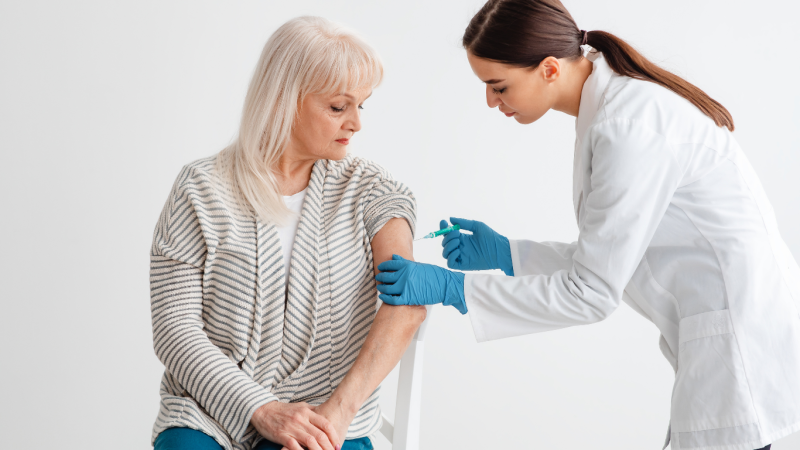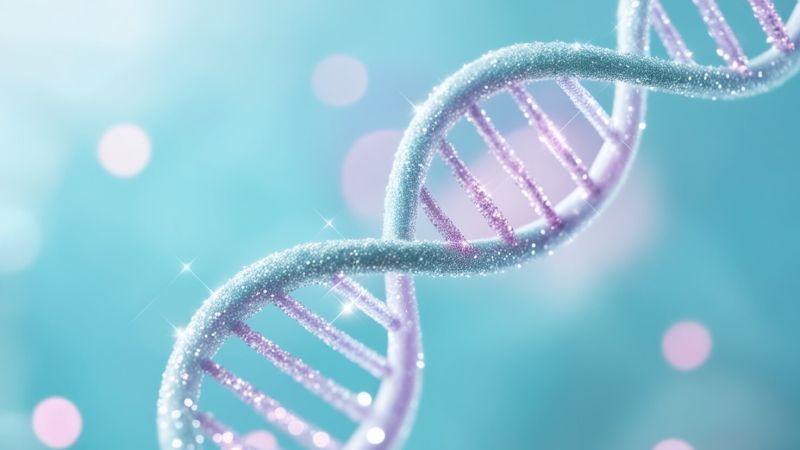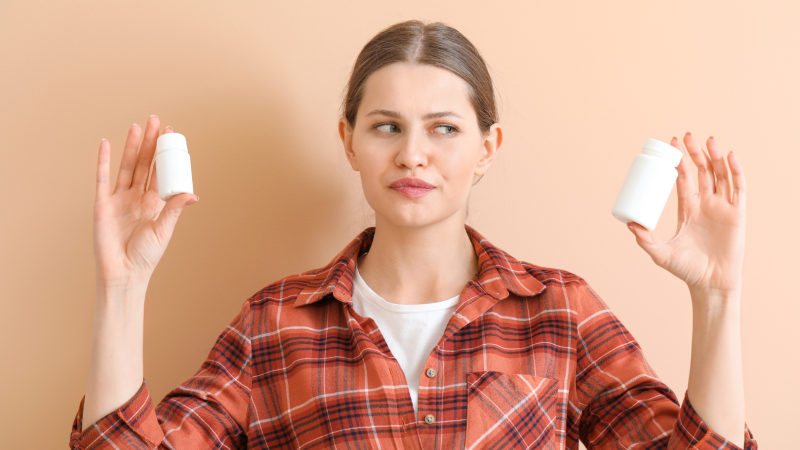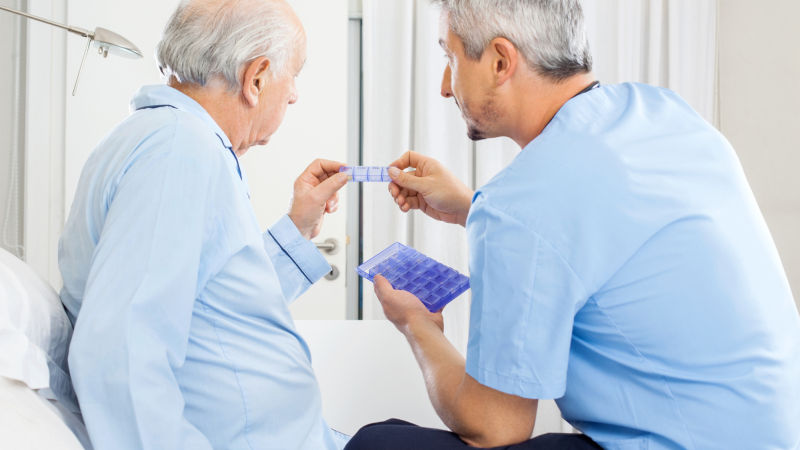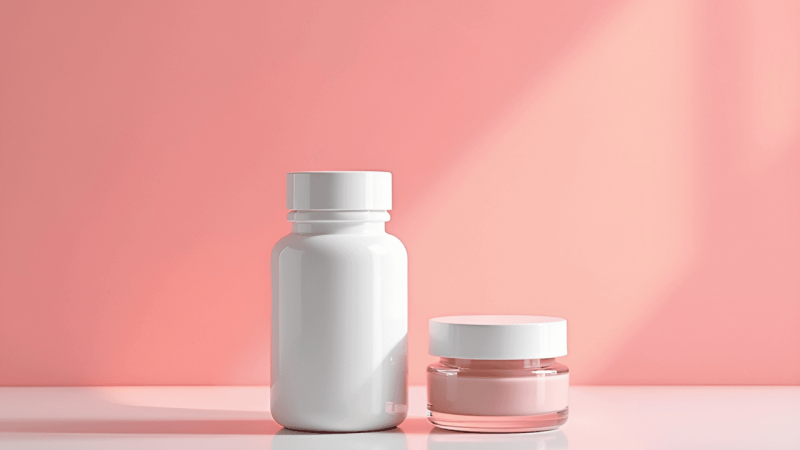
The Hidden Risks for Athletes: How To Achieve Peak Performance and Optimal Heart Health
Athletes are often seen as some of the healthiest individuals due to their dedication to fitness. Surprisingly, they are also at a higher risk for heart problems.
How is that possible?
If you’re an athlete engaging in high-intensity training, read on to discover how you can protect your heart health while achieving peak performance in your sport.
In this article, we discuss:
- How intense, strenuous training can impact the heart and the serious risks involved, just like these 3 famous athletes who lost their lives due to heart problems.
- The most common heart conditions that can affect young athletes’ performance and proactive steps to address them.
- Little-known yet crucial benefits of NAD for athletes to boost both their performance and heart health.

Reports of athletes collapsing during games or training1 have been increasing noticeably lately.
Despite being in peak physical shape and having expert teams managing their health, why do they still fall victim to heart issues?
According to the American Heart Association, nearly half of U.S. adults aged 20 and older have cardiovascular disease2.
Heart disease is no longer a problem for overweight, middle-aged people only.
It now affects the young, fit, and healthy, too, which means we need to keep an open mind about who’s at risk.
Recent studies have found that long-term, high-intensity training might impact the prevalence and severity of heart problems3.
While regular exercise is great for cardiovascular fitness, pushing too hard over extended periods can lead to issues.
Therefore, understanding the link between athletic activity and heart health is crucial for addressing this worrying trend and keeping athletes safe.
Fortunately, you can still pursue your passion while protecting your heart and boosting your athletic performance, just like Celera, one of our NAD supplement users.
With NAD, she powers through workouts and hits the track confidently without worrying about straining her heart.
From being ranked 16th, she’s now the second-fastest woman in the U.S.
“I now run professionally for Adidas. I started taking Vitality ↑® NAD+ Booster about three months ago and I’ve noticed a dramatic change.
It boosts your endurance, it boosts your energy, it boosts my recovery, and I just love having this product.
I feel like I can get through the workout. I feel like myself and I can get back to being me, and that’s being fast on the track.”
– Celera
Young Athletes and Heart Health

Sports enthusiasts and gym rats often develop a condition known as “athlete’s heart,4” where the heart becomes larger and stronger due to intense, regular exercise.
These healthy changes help manage the extra workload and, unlike heart disease, are harmless.
However, intense, strenuous training can sometimes lead to serious consequences that might require medical intervention.
For instance, sudden cardiac arrest (SCA) can strike young, active student-athletes too.
In a study of 2,149 U.S. high schools from 2009 to 2011, there were 26 cases of sudden cardiac arrest in students5, with 18 of those happening to student-athletes during exercise.
According to UT Health Houston, SCA is the leading cause of death among young athletes6.
Shockingly, many of these athletes had no prior history of heart issues7.
Meanwhile, a 2016 study concluded that sudden cardiac death (SCD) in athletes is relatively rare8, ranging from 1 in 40,000 to 1 in 80,000 athletes per year.
SCD is an unexpected and quick death caused by heart issues usually within an hour of symptoms appearing.
However, the American College of Sports Medicine notes that SCD is likely five times more common than reported, with many cases overlooked by media reports and insurance claims.
A study of NCAA athletes from 2003 to 2013 identified 514 student-athlete deaths over 4.2 athlete-years 9(the total time a group of athletes has spent participating in sports), with SCD being the leading cause.
The reality is, most of these sudden deaths are linked to underlying heart conditions that were never detected before.
Other common heart conditions affecting young athletes include:
- Pericarditis: This is an inflammation of the pericardium, the protective sac around the heart. It can cause chest pain and affect an athlete’s ability to perform, though it’s usually treatable with medication and rest.
- Wolff-Parkinson-White Syndrome (WPW): This is a condition where an extra electrical pathway in the heart causes rapid heartbeats. In some cases, it can lead to more serious heart rhythm problems.
- Aortic Stenosis: This condition involves the narrowing of the aortic valve10, making it harder for blood to flow to the rest of the body. It can limit athletic performance and, if severe, can be very dangerous.
- Mitral Valve Regurgitation: This happens when the mitral valve in your heart doesn’t close properly11, causing some blood to flow backward. It’s usually mild and not a big deal, but if it’s severe, it can affect your sports performance and might need medical treatment.
- Mitral Valve Prolapse: This occurs when the flaps of the mitral valve bulge into the heart’s upper chamber during a heartbeat. It’s usually harmless, but in some cases, it can cause symptoms or issues that might impact your ability to stay active.
Athletes must pay close attention to their bodies to maintain long-term health and peak performance.
Regular monitoring and understanding of physical signals12 are crucial.
Signs that something might be wrong with the heart include:
- Unusual fatigue during exercise
- Shortness of breath, especially early in a workout
- Difficulty breathing even at rest
- Chest pain or discomfort, especially during or after exercise
- Near-fainting or fainting episodes
- Palpitations
- Dizziness or lightheadedness
- Discomfort in other areas, such as the arms, back, neck, jaw, or stomach
- Unexplained rapid heart rate
- Excessive sweating
Spotting issues early is key for catching heart problems and making sure young athletes stay safe and healthy.
Sports Activity and Its Effects on the Body

Just like any other muscle, the heart needs regular exercise to stay strong and healthy.
A 2018 study published in the Frontiers Journal found that staying active enhances the heart’s efficiency by increasing cardiac output13, meaning it pumps more blood with each beat.
This increased efficiency reduces the heart’s overall workload, so it doesn’t have to work as hard to keep you going strong.
Regular exercise also improves blood flow in the small vessels around the heart.
This helps prevent blockages from fatty deposits that can build up over time, reducing the likelihood of heart attacks.
Moreover, regular physical activity through sports can lower LDL cholesterol (the bad kind) and increase HDL cholesterol (the good kind), reducing the risk of stroke by 20%14.
In contrast, inactive individuals face a 30-50% higher risk of developing hypertension.15
According to the Heart Foundation, physical activity and exercise reduce your risk of heart disease, including heart attacks, high blood pressure, and heart failure.16
However, while sports can be incredibly beneficial, intense physical exertion carries some risks.
Long-term, high-intensity training can put a lot of strain on the heart, causing an increase in heart rate, blood pressure, and heart size over time.
This strain generates free radicals, leading to oxidative stress and temporary heart cell dysfunction.
Chronic stress can trigger an immune response, resulting in collagen buildup and fibrosis (scar tissue formation) in the heart and arteries17, which affects heart function.
Overtraining can also stiffen the heart muscle18, leading to atrial fibrillation (an irregular heartbeat) during high-intensity workouts.
This increases the risk of blood clots that could cause a stroke.
People with existing heart conditions or genetic risks may have even greater dangers.
For them, pushing themselves with intense workouts could be risky and life-threatening.
So, if you’re new to exercise or have any health concerns, it’s important to talk to a healthcare provider before diving into intense sports activities.
Striking the right balance between the benefits of exercise and its potential risks is key.
Sports can be great for your heart, but it’s important to take it easy with high-intensity training and make sure you’re ready for it.
3 Famous Athletes with Heart Problems

Even top athletes aren’t immune to heart issues. Notable cases of stars from various sports shocked everyone, including…
Chuck Hughes: Coronary Heart Disease
Chuck Hughes, a Detroit Lions wide receiver, suffered a heart attack on the field in 1971 during a game against the Chicago Bears. He collapsed and never regained consciousness.
Despite previous chest and stomach pains, tests hadn’t shown heart damage, so Hughes kept playing. An autopsy revealed Chuck had undiagnosed coronary heart disease19 and a clot in a main artery.
Christian Eriksen: Cardiac Arrest
In 2021 during the Euro 2020 football championships, Danish soccer player Christian Eriksen shocked everyone when he suddenly collapsed on the pitch20.
The then-29-year-old midfielder fell face-first onto the turf, leaving the stadium and viewers around the world in stunned silence. It was later revealed that Eriksen had suffered a cardiac arrest.
Luis Tejada: Heart Attack
In January 2024, 41-year-old Luis Tejada, Panama’s top scorer and former World Cup star, tragically lost his life to a heart attack21 during a recreational match.
He had reported chest pains before the game and fainted during the match. Despite being rushed to the hospital for immediate medical attention, he passed away shortly after.
These cases have boosted public awareness about heart health in athletes and led to important policy changes in sports organizations.
Now, there’s a stronger focus on routine heart screenings and improved medical protocols at games.
However, it’s also crucial for athletes to be proactive about their own health.
Being aware of symptoms, regularly consulting with healthcare providers, and addressing any warning signs promptly can make a huge difference.
By combining policy improvements with individual vigilance, we can better safeguard the health of athletes at all levels.
What Causes Sudden Cardiac Arrest in Athletes?

Sudden cardiac arrest (SCA) occurs when the heart suddenly ceases beating, leading to an immediate loss of consciousness and breathing.
Blood flow to the brain and other vital organs also stops.
It’s a serious emergency that can happen without warning and requires immediate medical intervention to prevent death.
Tragically, 9 out of 10 people who experience cardiac arrest outside of a hospital don’t survive22, often passing away within minutes.
Here are common causes of SCA in athletes
Hypertrophic Cardiomyopathy (HCM)
HCM is characterized by an abnormal thickening of the heart muscle, which impairs its ability to pump blood efficiently. This thickening can disrupt the heart’s electrical signals, leading to sudden cardiac arrest.
Arrhythmogenic Right Ventricular Cardiomyopathy (ARVC)
ARVC is a genetic disorder where scar tissue or fatty deposits replace normal heart muscle in the right ventricle. This change can disturb heart rhythms and significantly increase the risk of arrhythmias and SCA.
Coronary Artery Anomalies
These are structural problems with the heart’s arteries, which can affect blood flow and lead to sudden cardiac arrest, especially during intense exercise.
Other Less Common Conditions
Several other rarer conditions can cause SCA in athletes, including long QT syndrome23, Brugada syndrome, and myocarditis. These conditions can disrupt the heart’s rhythm or reduce its ability to pump blood effectively.
Prevention and Screening Methods

To keep athletes safe and catch potential heart issues early before they become critical, several key screening methods are used including:
Pre-participation Physical Exams (PPE)
These exams assess an athlete’s medical history and physical condition to identify possible heart issues before intense training or competition begins.
The PPE should be done at least six weeks before the first preseason practice. This gives enough time to evaluate the athlete and address any medical issues that might come up. How often a PPE needs to be done can vary depending on state regulations.
ECG and Echocardiograms
Electrocardiograms (ECGs) and echocardiograms offer detailed insights into the heart’s electrical activity and structural health. Regular screenings with these tools can detect abnormalities that might pose a risk for sudden cardiac arrest.
An ECG is about five times more accurate than asking medical history questions and ten times more precise than a physical exam24 when it comes to detecting heart issues. Plus, it has a lower rate of false positives compared to medical history and physical checks.
Combining these screening methods with a solid understanding of the risks that can lead to sudden cardiac arrest (SCA) is key to ensuring athletes stay safe and healthy in their pursuits.
5 NAD Benefits for Athletes’ Hearts

NAD (nicotinamide adenine dinucleotide) is a key molecule present in every cell of your body. Without it, your body simply couldn’t function.
Interestingly, NAD can boost your athletic performance by supporting your heart health.
A strong and efficient heart is crucial for any athlete, and here are 7 key benefits of NAD specifically for your heart:
Enhanced Energy Production
A study published in Circulation highlights NAD’s crucial role in ATP production25, the primary energy currency in cells.
Without enough NAD, your heart’s cells can’t produce the energy needed to keep up with intense exercise.
More NAD means more efficient ATP production, giving your heart the energy boost it needs to pump efficiently, even when you’re pushing your limits.
The International Journal of Medical Sciences also notes that NAD can improve heart function, particularly in cases of heart failure26, where the heart struggles to pump enough blood and energy to the body.
By boosting ATP production, NAD helps the heart generate more energy, enabling it to work more efficiently and enhancing overall function and performance.
Faster Recovery
NAD plays a key role in repairing and regenerating cells27, including those in your heart.
After intense training sessions or competitions, your heart needs to recover just like the rest of your body.
NAD helps speed up this recovery process by promoting the repair of heart muscle cells, ensuring they bounce back quickly and efficiently.
When your heart muscle cells recover faster, it means less downtime between workouts and a stronger, more resilient heart.
With NAD aiding in faster recovery, your heart can keep up with the demands of your training schedule, helping you perform at your best more consistently.
Improved Blood Flow
Better blood flow means your heart gets more oxygen and nutrients, which enhances its performance and endurance.
NAD helps by ensuring that your blood vessels are healthy and efficient, reducing the strain on your heart during intense exercise.
Additionally, improved blood flow can help lower blood pressure28.
Your blood vessels can relax and dilate more easily, which helps to maintain a lower, more stable blood pressure.
This means less stress on the heart and keeping your heart in top shape for all your athletic endeavors.
Enhanced Cardiovascular Function
A 2016 study published in the Nature Journal shows how NAD plays a key role in supporting sirtuins29, a group of proteins that help regulate cellular health and longevity.
For athletes, this is particularly important because sirtuins are crucial for improving endothelial function.
The endothelium is the thin layer of cells lining your blood vessels, and its health is essential for maintaining cardiovascular function.
When sirtuins are active, they help keep your blood vessels flexible and responsive.
Improved endothelial function also helps reduce the risk of other cardiovascular issues30, keeping your heart always ready for the next challenge.
Managed Inflammation
Inflammation is a normal response of the body to injury or stress, helping to promote healing.
However, when inflammation becomes chronic, it can lead to serious health issues, particularly for the heart.
NAD plays a key role in modulating inflammatory responses, helping to reduce the risk of inflammation-related heart problems.
Additionally, oxidative stress (when there are too many harmful free radicals in the body) can worsen inflammation and cause more damage to heart cells.
By combating oxidative stress31, NAD supports your body’s ability to manage inflammation effectively.
Two Steps to Support Heart Health and Boost Athletic Performance

Step 1: Supplement with Vitality ↑® NAD+ Booster.
When it comes to boosting your energy levels, there’s nothing quite like Vitality ↑® NAD+ Booster.
This supplement is meticulously formulated to provide a potent blend of natural ingredients that work synergistically to enhance your heart health and boost your vitality.
It is a clinically validated formulation consisting of NAD precursor, Creatine monohydrate, D-Ribose, and Nicotinamide that work synergistically to help:
- Increase energy production in the heart
- Alleviate heart failure
- Lower the risk of heart strain
- Reduce blood pressure
- Protect the heart from damage
- Delay heart aging
- Support overall heart health
Vitality ↑® NAD+ Booster supports healthy NAD levels to revitalize your cells, optimize your mitochondria, and improve your energy so you can do things you love!
Whether you’re feeling fatigued from a busy lifestyle or struggling with chronic fatigue syndrome,
Vitality ↑® NAD+ Booster can help restore your energy levels and improve your overall well-being.
⇒ You can get Vitality ↑® NAD+ Booster here.
Step 2: Take Creatine+.
If you want to boost your energy, recover from your training fast, and grow your muscles twice as fast, Jinfiniti’s Creatine+ can help.
With Creatine+, you can expect to experience…
A burst of energy to help you complete your workouts and stay energized throughout the day.
While creatine offers energy, Creatine+ also contains ATP, which is essential for muscle energy production and can enhance your performance even further. Other products on the market typically offer only one of these key energy components.
Faster progress in muscle growth and strength development.
Creatine+ is designed to support and enhance your body’s natural muscle-building processes, helping you achieve your fitness goals more efficiently.
Faster recovery from your workouts than ever before.
While aches and pains after exercise are normal, Creatine+ can help reduce these discomforts, allowing you to recover quickly and get back to your training with minimal downtime.
Building muscle not only improves your physical appearance but also contributes to your overall health and longevity.
Maintaining muscle mass can help you avoid injuries and common issues associated with muscle loss, bone density reduction, and strength decline as you age. Creatine+ supports your muscle health, helping you live a healthier, more active life.
Our Money-Back Guarantee
If our Vitality ↑® NAD+ Booster fails to increase your NAD levels, just send us a message within 60 days and we will gladly refund your supplement purchase.
Referenced Sources:
- https://edition.cnn.com/2012/03/19/sport/health-muamba-heart-problems/index.html ↩︎
- https://www.heart.org/en/health-topics/consumer-healthcare/what-is-cardiovascular-disease/top-10-myths-about-cardiovascular-disease ↩︎
- https://www.ncbi.nlm.nih.gov/pmc/articles/PMC7403658/#clc23340-bib-0008 ↩︎
- https://my.clevelandclinic.org/health/diseases/23920-athletes-heart ↩︎
- https://www.researchgate.net/publication/261734846 ↩︎
- https://www.utphysicians.com/what-to-know-about-sudden-cardiac-arrest-in-young-athletes/ ↩︎
- https://www.researchgate.net/publication/358619624 ↩︎
- https://www.ncbi.nlm.nih.gov/pmc/articles/PMC4969030/ ↩︎
- https://journals.lww.com/acsm-csmr/fulltext/2016/03000/cardiovascular_screening_in_young_athletes_.9.aspx ↩︎
- https://my.clevelandclinic.org/health/body/22458-aortic-valve ↩︎
- https://www.mayoclinic.org/diseases-conditions/mitral-valve-regurgitation/symptoms-causes/syc-20350178 ↩︎
- https://www.ncbi.nlm.nih.gov/pmc/articles/PMC4306765/ ↩︎
- https://www.frontiersin.org/journals/cardiovascular-medicine/articles/10.3389/fcvm.2018.00135/full ↩︎
- https://www.endeavorhealth.org/articles/ways-your-heart-benefits-from-exercise ↩︎
- https://www.physio-pedia.com/Physical_Activity_and_Cardiovascular_Disease ↩︎
- https://www.heartfoundation.org.au/healthy-living/physical-activity/benefits-of-physical-activity ↩︎
- https://www.ncbi.nlm.nih.gov/pmc/articles/PMC3538475/ ↩︎
- https://www.ncbi.nlm.nih.gov/pmc/articles/PMC5135518/ ↩︎
- https://www.businessinsider.com/sports-stars-who-cardiac-arrest-on-field-like-damar-hamlin-20231 ↩︎
- https://edition.cnn.com/2023/01/03/football/christian-eriksen-cardiac-arrest-return-spt-intl/index.html ↩︎
- https://www.marca.com/en/football/2024/01/28/65b6c7fd268e3e6d6f8b4576.html ↩︎
- https://www.nhlbi.nih.gov/health/cardiac-arrest ↩︎
- https://www.mayoclinic.org/diseases-conditions/long-qt-syndrome/symptoms-causes/syc-20352518 ↩︎
- https://www.verywellhealth.com/sudden-death-in-young-athletes-1746269 ↩︎
- https://www.ahajournals.org/doi/full/10.1161/CIRCULATIONAHA.121.056589 ↩︎
- https://www.medsci.org/v21p0369.htm ↩︎
- https://www.cellr4.org/article/852 ↩︎
- https://www.ncbi.nlm.nih.gov/pmc/articles/PMC9133775/ ↩︎
- https://www.nature.com/articles/npjamd201617 ↩︎
- https://www.ncbi.nlm.nih.gov/pmc/articles/PMC9170600/ ↩︎
- https://www.ncbi.nlm.nih.gov/pmc/articles/PMC5663297/ ↩︎
Read More








